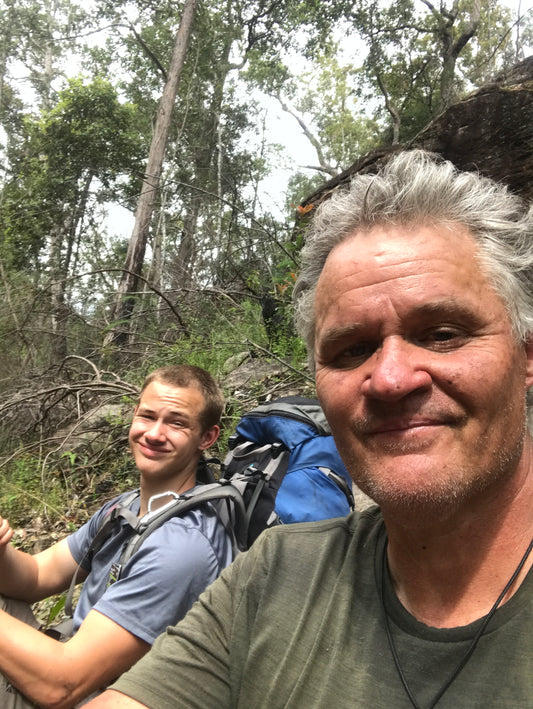Will Batson is Area Manager for the Upper Blue Mountains with the National Parks and Wildlife Service. We asked about some of the challenges and rewards of his hugely important job.
Q: How did you get to become responsible for this wonderful part of the world?
A: I have a background in adventure tourism and a PhD in conservation ecology, and I previously managed a wildlife sanctuary in the ACT. This is a lot bigger – 100,00 hectares, starting at Linden and encompassing the upper mountains where most of the visitors come.

Q: How many visitors?
A: We have eight million visits a year to the Blue Mountains National Park, some of which are the same people coming more than once. That doesn’t include visitors to the Echo Point lookout, which is actually on council land. This is the most visited national park in the state. Visitations tend to increase every year – and they actually went up dramatically during Covid.
Q: Where do the visitors congregate?
A: As you’d imagine, most don’t go further than half an hour’s walk from the three major lookouts. But there’s also been a big increase in hiking, climbing and canyoning in more remote parts of the park.
Q: What does your job involve?
A: In the Upper Mountains we have a lot of visitors, neighbours and assets. This means maintenance of infrastructure is a huge part of our core duties. In addition, we are responsible for managing fire, pest and weeds, threatened species and cultural heritage across the Upper Mountains. The area also includes a large part of the Warragamba water catchment and wilderness areas, which both require specific management actions. I have a team of 30 staff, including Rangers, Field Officers and Administration staff, and work collaboratively with other specialist teams to manage certain aspects, including fire and weeds.
Q: The 2019/20 fires would have hurt?
A: In the Blue Mountains National Park, around 70 per cent was burnt. Then the heavy rains came, to compound the damage, with erosion and landslides. Some of the tracks are still closed, such as the one down from Govetts Leap. It’s not just a question of money, there’s a limit to the number of workers available with the necessary experience for that kind of work.
Q: I’ve noticed you’re using sandstone a lot more on the tracks now, especially for steps. A lot of it gets flown in by helicopter.
A: Yes , it’s more expensive but it copes a lot better with fire. As we gradually rebuild damaged tracks, we’re adding resilience into the system.

Q: When will the National Pass at Wentworth falls reopen?
A: That’s different. The problem is that Wentworth Falls is what we call geographically active, and we don’t know yet how to make it safe. We used to have 300,000 people a year walk that one, then there was the fatal rock fall in 2017. And then the 2022 fatal accident on the Wentworth Pass track, in the valley. Unfortunately there are no plans at the moment to reopen those tracks.
Q: What are your biggest issues with weeds and pests?
A: Having the towns in the middle of the park is a challenge, we get a lot of weed seeds being washed down urban waterways into the Grose and Jamison valleys. There aren’t as many feral cats as in more arid places, but we have foxes and wild dogs on the northern fringe. If you go down far enough into the Coxs River valley or the Kedumba, you get wild pigs and even feral cattle. We put a lot of effort into keeping the numbers down.
Q: What are some of your favourite parts of the park?
A: I walk the Grand Canyon at Blackheath a few times a week just for pleasure. Anywhere in the Grose Valley is good, the Blue Gum Forest of course. Then there’s the Kedumba, when you look up at the escarpment … I could name a lot more.
Q: Not a bad office.
A: Yes. I feel very lucky to live and work here.
For more information on the parks, and on what tracks are accessible, see www.nationalparks.nsw.gov.au





